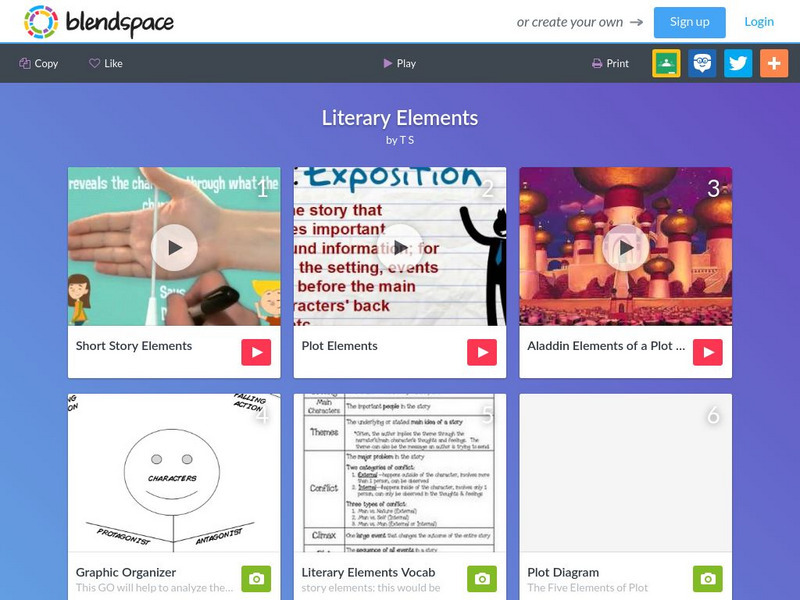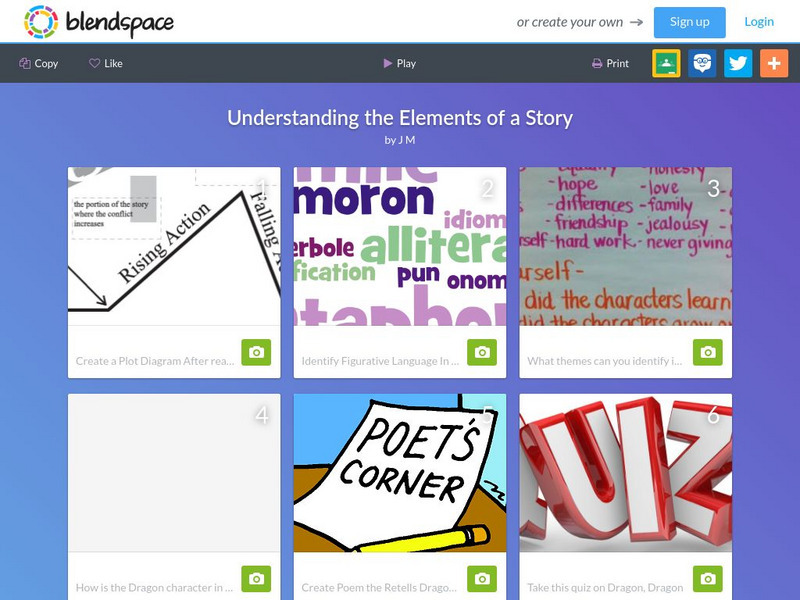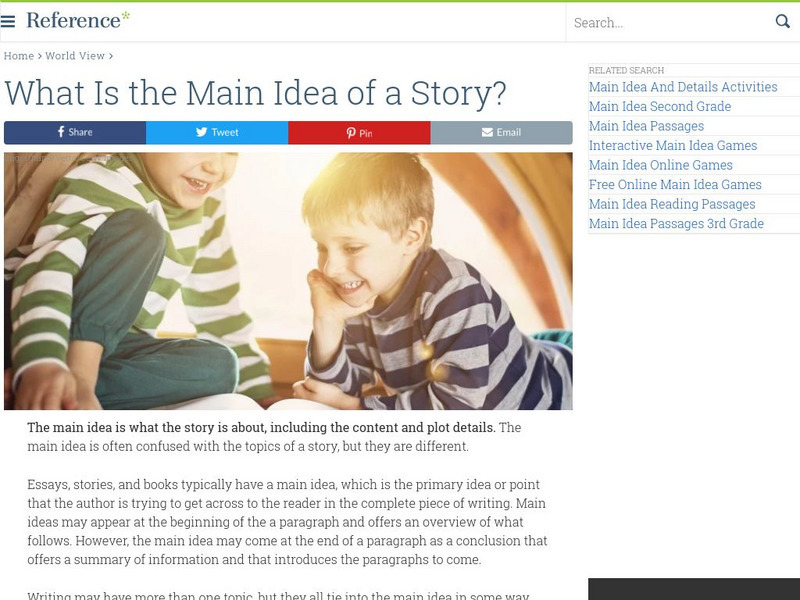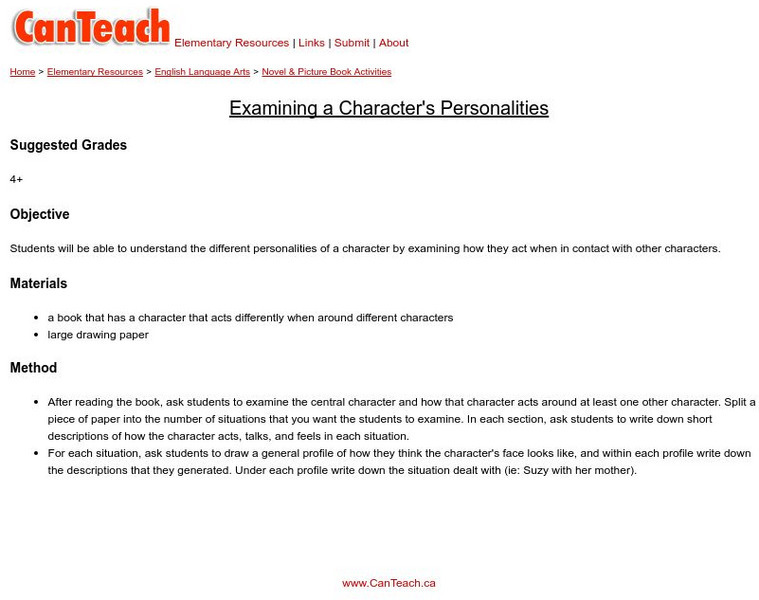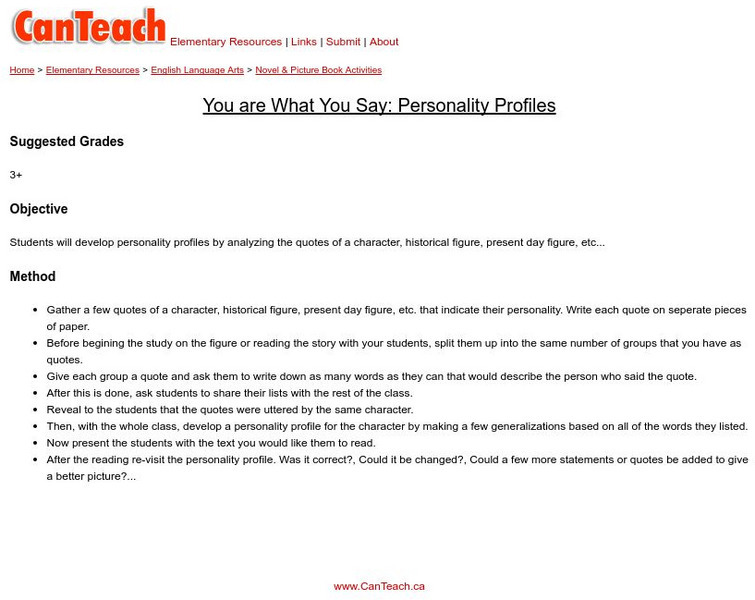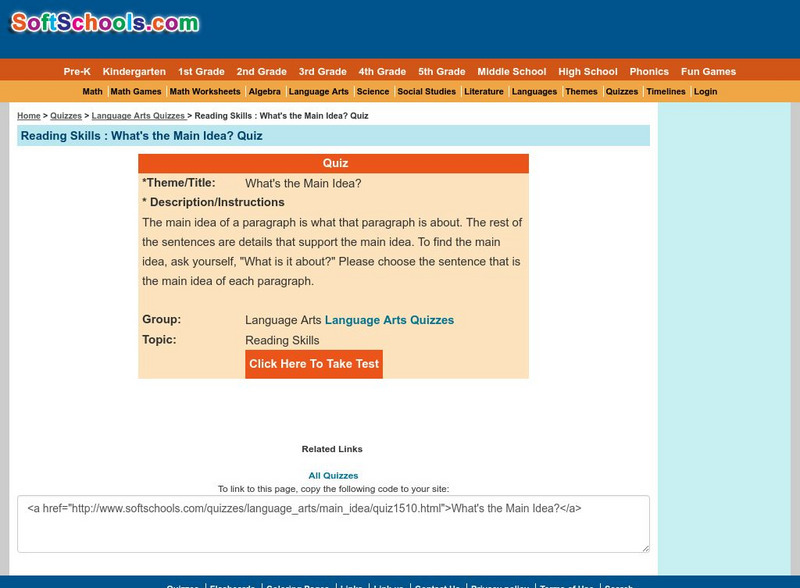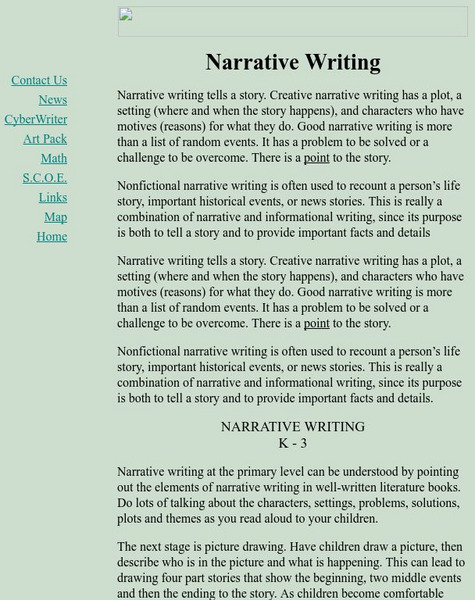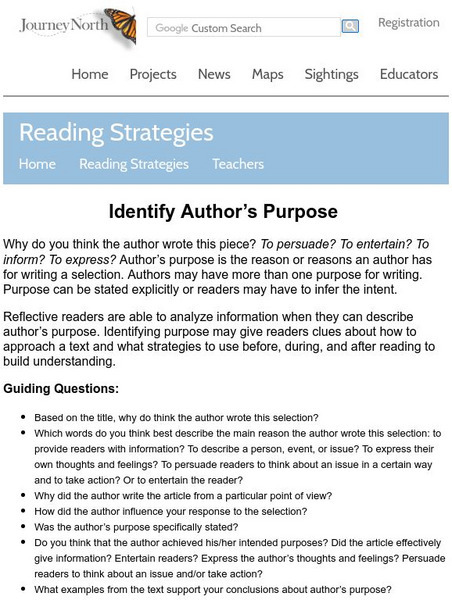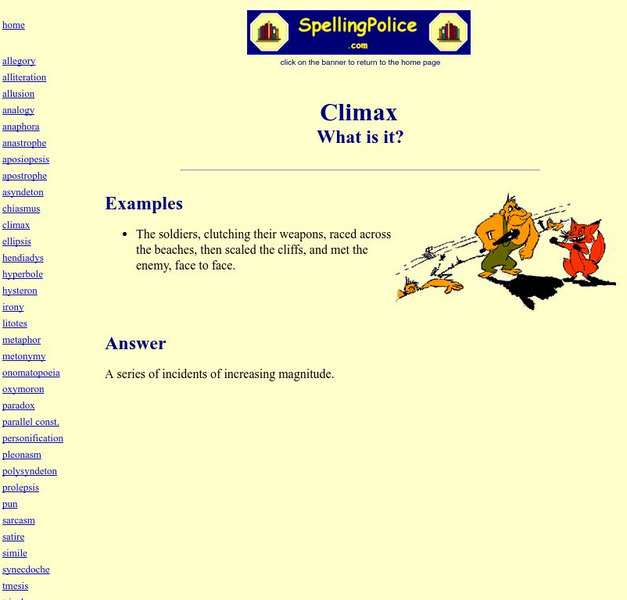TES Global
Blendspace: Literary Elements
A six-part learning module with links to videos and graphic organizers on plot and plot elements.
TES Global
Blendspace: Authors Purpose
A five-part learning module with links to videos and an image on author's purpose.
TES Global
Blendspace: Main Idea
A learning module with six links to images and videos on finding the main idea of a text.
TES Global
Blendspace: Understanding the Elements of a Story
A six-part learning module with links to images with information and graphic organizers and a quiz on story elements.
Other
Prezi: Author's Purpose
Slideshow provides an explanation of the author's purpose which is to reflect, inform, persuade, or entertain (RIPE).
Other
Prezi: Recalling Facts and Details
Slideshow investigates how to identify facts or details in a story.
Other
Reference: What Is the Main Idea of a Story
This reference page defines the main idea of a story and explains how it differs from topics of a story.
ClassFlow
Class Flow: Character Analysis
[Free Registration/Login Required] This elementary flipchart uses examples from children's literature to explore character. It includes writing activities and challenges children to think from the character's point of view.
Can Teach
Can Teach: Examining a Character's Personalities
In this lesson plan students will be able to understand the different personalities of a character by examining how they act when in contact with other characters. Lesson plan indicated for 4th grade and above.
Can Teach
Can Teach: You Are What You Say Personality Profiles
In this lesson plan students will develop personality profiles by analyzing the quotes of a character, historical figure, present day figure, etc. Lesson plan indicated for 3rd grade and above.
Soft Schools
Soft Schools: What's the Main Idea? Quiz
This main idea quiz begins with a page explaining how to find the main idea followed by the self-scoring quiz. Students read short passages and select the main idea. A score sheet is presented at the end of the quiz.
Other
Cyberwriter: Narrative Writing
Cyberwriter gives narrative writing activities leveled for K-3rd grades and 4th-8th grades. A brief explanation about narrative writing is also on this page. CCSS.ELA-Literacy.CCRA.W.3
Other
Prezi: How Does the Time Period of the Setting Affect the Plot?
Learn how setting affects character and how time period affects plot.
Other
Story Arts: Storytelling Activities & Plot Structure Scenarios
This collection of storytelling activities-developed by storyteller/author Heather Forest for her storytelling workshops with young scholars, teachers, and librarians-can be expanded by educators into language arts lesson plans to...
Annenberg Foundation
Annenberg Learner: Journey North: Reading Strategies: Identify Author's Purpose
Learn about author's purpose and how to identify it with a list of guiding questions.
Quizlet
Quizlet: Story Elements Match
Match each story element with its example as you race against the clock in this online matching game.
Quizlet
Quizlet: Story Elements Quiz 6th Grade Honors Matching
This interactive game of "Match" assesses students' knowledge of story element definitions. Students will match the correct definition of a story element to its corresponding definition.
Quizlet
Quizlet: Story Elements Quiz 6th Grade Honors: Learn
This interactive lesson engages students in learning story element definitions. Students will type the correct story element after reading its definition.
Quizlet
Quizlet: Story Elements Quiz 6th Grade Honors Gravity
This interactive game of "Gravity" assesses students' knowledge of story element definitions. Students will match the correct story elements to their corresponding definitions.
SMART Technologies
Smart: Characters and Characterization
This activity addresses the types of characters found in stories and the methods authors use to build characters.
Other
Spelling Police: Climax: What Is It?
This site gives a definition of climax and an example. Part of a larger site defining literary terms.


